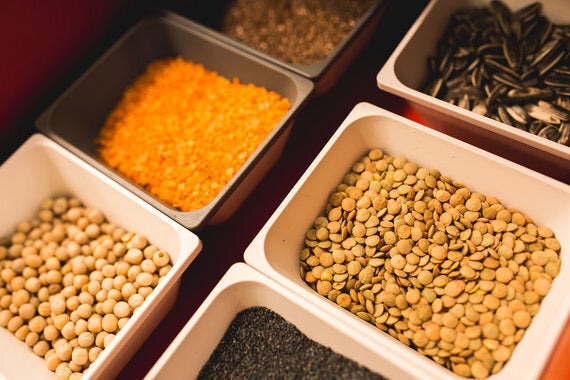
Have you noticed recently that your grocery bill seems a wee bit higher? No, your three-year-old didn't toss something in the cart without you seeing; food costs are on the rise.
On a recent trip to the grocery store, my eyes just about tumbled out of my head when I noticed that a head of cauliflower was $6. I chalked it up to human error and called over the manager to politely advise that there was a mistake with the pricing. He rolled back on his heels and winced, then explained probably for the 108th time that day, that indeed it was the correct price.
Bewildered, I rolled my cart along, as I wondered what on earth was going on.
Two things were at play with the cauliflower debacle -- currency and climate. The Canadian dollar has dropped below the 70-cent US level for the first time since May 2003. The low Canadian dollar combined with the draught in California, where much of our exports are from, have Canadians tossing sofa cushions for extra change.
In 2015 California experienced a fourth year of a record-breaking drought. Experts are split about how significantly this is affecting produce prices in Canada, however it can be no coincidence, as Canada relies heavily on the 'golden state' for its fruits and veggies. This drought has led to a reduced supply of fruits and vegetables across North America. Combine this with a weak Canadian dollar and you have a recipe for a side of $6 cauliflower.
A recent study by the University of Guelph Food Institute forecasts that Canadians will see food inflation rates from two to four per cent in 2016. This is a trend that continues from 2015 in which the cost of vegetables, fruits and meat increased Canadian grocery bills by 4.1 percent.
Food is often the most expensive item in a household following the cost to house yourself and your edibles.
Here are some essential tips for making your trip to the grocery store just a little less gut-wrenching (my favourite is #5):
1.Save money before your grocery store trip
There is no shame in using flyers! Take advantage of sales and price matching to stretch your dollar even further. Also, stock up on items (canned goods especially), when they're on sale. Phone aps like Flipp allow you to search for an item to determine if it's on sale. Alternatively, just jump online and check out the weekly flyers for your local grocery stores. If a store has a price match guarantee - take them up on it!
2.Meal planning is power and can help to avoid food waste
Build a weekly meal plan starting first with your perishable refrigerated items, buying only items that you need to complete the meal. To further avoid food waste make sure that each time you open something you stick a label on it with the date of when it was opened and try to use the ingredient up before it expires. You can do this simply with some masking tape and a marker. Meal planning will give you power over your wallet AND your health by making hearty meals at home.
3.Big batch meals
Now that you've determined what's on sale and how you will plan your meals for the week, make big batch meals. Doing so may allow you to cut out at least one shopping trip a month, if not more. The best day to do this is on a Sunday or whatever day of the week you have the most time. Once cooked, simply portion out the meals in containers or freezer bags and freeze and reheat for later. Just make sure to write the date on the outside of the container or freezer bag so you know when you made it.
4.Meat is not your only source of protein

Statistics Canada reported in 2013 that Canadians spent about $1043 or 24% of their yearly grocery budget on meat! If you take into account the rate of inflation, this number has certainly soared. Instead, try mixing in a few plant based proteins such as leafy greens, beans and nuts to get your protein needs. In addition to shrinking your grocery bill, research has shown that plant based proteins are excellent for weight loss.
5.Properly store foods
I've saved the best for last! Once I began doing this, I was astounded by how much money I began to save.

Canadians waste $31 billion of food every year, 47% is wasted in the home. Wow, I know, knocked my socks off too. No one likes to be a statistic so here's what you can do.
Where you store your produce in your fridge has a direct effect on how long your produce will last. This is because different areas of your fridge have different temperatures. I've included some of the more common produce below but for a complete list of how to store your produce for maximum shelf life check out the free downloadable PDF here
•Apples - Remove them from the plastic bag and store them loosely in the fridge. You can also freeze them for maximum shelf life by peeling, cutting them up, tossing in a little lemon juice then freezing
•Leafy greens/herbs - As soon as you get home from the grocery store, wash and dry them then wrap in a cloth or paper towel, place back into a plastic produce bag and refrigerate. This little trick has doubled the shelf life of my greens.
•Peppers - These guys like to be stored outside of the produce bins, in the warmer parts of your fridge, typically towards the door. You can also just cut them up, and freeze them until you're ready to use.
Applying these cost saving tips to your groceries, will definitely put you ahead in the long run!
Follow HuffPost Canada Blogs on Facebook
ALSO ON HUFFPOST: